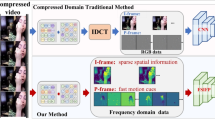Abstract
High efficient video coding (HEVC) succeeds dual coding efficiency development contrasted to its predecessor H.264/MPEG-4 AVC. Though, it experiences high computational complexity caused by its quad-tree structure in motion estimation (ME). The full search ME (FSME) procedure can fundamentally raise the video encoder compression ratio (CR) while maintaining high video quality, but it is also fundamentally expensive and can comprise of more than 45% of the entire motion estimation method. The consecutive rate-constrained elimination technique (CRCE) safely removes contender motion vectors while saving the best aspirant chosen by the full search block motion estimation (FSBME) method. However, these methods have been failed to consume less power. This paper proposes low power oriented full search block based motion estimation (LP-FSBME) algorithm. The proposed algorithm decomposes every block into subsequent sub-pixel blocks by computing the sum of absolute difference (SAD) values of sub-pixel search locations utilizing the SAD benefits of neighboring integer pixel search areas for best motion vector (MV) and it diminishes the computational complexity. The proposed method hardware design is implemented with Verilog Hardware Description Language (Verilog-HDL) and synthesized by Xilinx Virtex 7 FPGA XC7VX1140T device with speed grade 1 in Xilinx software version 14.5. The proposed method is checked videos occupied 754 K gate counts, 4410 Look Up Tables (LUTs), 3312 Registers, maximum occupied frequency is 204 MHz, maximum power consumption is 40.14 mW in 1080 pixels @ 30 frames per second.







Similar content being viewed by others
References
Draft ITU-T Rec. Final Draft Int. Standard of Joint Video Specification, ITU-T Rec. H.264 and ISO/IEC 14496-10 AVC, (2003)
Cote, G., Erol, B., Kossentini, F.: H:263+: video coding at low bit rate. IEEE Trans. Circuits Syst. Video Technol. 8, 849–866 (1998)
Gao, X.Q., Duanmu, C.J., Zou, C.R.: A multilevel successive elimination algorithm for block matching motion estimation. IEEE Trans. Image Process. 9(3), 501–504 (2000)
Zhu, S., Ma, K.-K.: A new diamond search algorithm for fast block-matching motion estimation. IEEE Trans. Image Process. 9(2), 287–290 (2000)
Li, W., Salari, E.: Successive elimination algorithm for motion estimation. IEEE Transactions on Image Processing 4(1), 105–107 (1995). https://doi.org/10.1109/83.350809
Coban, M., Mersereau, R.: A fast exhaustive search algorithm for rate-constrained motion estimation. IEEE Trans. Image Process. 7(5), 769–773 (1998). https://doi.org/10.1109/83.668031
Toivonen, T., Heikkila, J.: Fast full search block motion estimation for H.264/AVC with multilevel successive elimination algorithm. In: Proceedings of the 2004 IEEE International Conference on Image Processing (ICIP 2004), Singapore, pp. 1485–1488 (2004)
Yang, M., Cui, H., Tang, K.: Efficient tree structured motion estimation using successive elimination. Vis. Image Signal Process. IEE Proc 151(5), 369–377 (2004). https://doi.org/10.1049/ip-vis:20040720
Trudeau, L., Coulombe, S., Desrosiers, C.: Rate distortion-based motion estimation search ordering for rate-constrained successive elimination algorithms. In: Proceedings of the 2014 IEEE International Conference on Image Processing (ICIP 2014), Paris, France, pp. 3175–3179. (2014) https://doi.org/10.1109/icip.2014.7025642
Trudeau, L., Coulombe, S., Desrosiers, C.: An adaptive search ordering for rate-constrained successive elimination algorithms. In: Proceedings of the 2015 IEEE International Conference on Image Processing (ICIP 2015), Québec, Canada, (2015)
Chen, T.C., et al.: Analysis and architecture design of an HD720p 30 frames/s H.264/AVC encoder. IEEE Trans. Cir. Syst. Video Tech. 16(6), 673–688 (2006)
Liu, L.K., Feig, E.: A block-based gradient descent search algorithm for block motion estimation in video coding. IEEE Trans. Circuits Syst. Video Technol. 6, 419–423 (1996)
Tham, J.Y., Ranganath, S., Ranganath, M., Kassim, A.: A novel unrestricted center-biased diamond search algorithm for motion estimation. IEEE Trans. Circuits Syst. Video Technol. 8, 369–377 (1998)
Gharavi, H., Mills, M.: Block-matching motion estimation algorithms- new results. IEEE Trans. Circuits Syst. 37, 649–651 (1997)
Ji, X.H., Zhu, C., Jia, H.Z., Xie, X.D., Yin, H.B.: A hardware-efficient architecture for multi-resolution motion estimation using fully reconfigurable processing element array. In: Proceedings of the ICME, pp. 1–6 (2011)
Yin, H.B., Jia, H.Z., Qi, H.G., Ji, X.H., et al.: A hardware-efficient multi-resolution block matching algorithm and its VLSI architecture for high definition MPEG-like video encoders. IEEE Trans. Circuits Syst. Video Technol. 20(9), 1242–1254 (2010)
Liu, J., Ji, X., Zhu, C., Jia, H., Xie, X., Gao, W.: Adaptive multiresolution motion estimation using texture-based search strategies. In: Proceedings of the IEEE International Conference of Consumer Electronics, pp. 363–366, (2014)
He, Z., Liou, M.L.: Design of fast motion estimation algorithm based on hardware consideration. IEEE Trans. Circuits Syst. Video Technol. 7, 819–823 (1997)
Jong, H.M., Chen, L.G., Chiueh, T.-D.: Parallel architectures for 3-Step hierarchical search block-matching algorithm. IEEE Trans. Circuits Syst. Video Technol. 4, 407–416 (1994)
Nam, S.H., Lee, M.K.: High-throughput block matching VLSI architecture with low memory bandwidth. IEEE Trans. Circuits Syst. Video Technol. 45, 508–512 (1998)
Vos, L.D., Stegherr, M.: Parameterizable VLSI architecture for the full search block- matching algorithm. IEEE Trans. Circuits Syst. 36, 1309–1316 (1989)
Yang, K.M., Sun, M.T., Wu, L.: A family of VLSI designs for the motion compensation block-matching algorithm. IEEE Trans. Circuits Syst. 36, 1317–1325 (1989)
Madhura, S., Suresh, K.: A novel hardware efficient algorithm for impulse noise filtering with motion estimation. In: Proceedings of the IEEE International Conference on Communication and Electronics Systems (ICCES), pp. 1–5 (2016)
Author information
Authors and Affiliations
Corresponding author
Rights and permissions
About this article
Cite this article
Basha, S.M., Kannan, M. Novel architecture and implementation of low power oriented full search block motion estimation. Cluster Comput 22 (Suppl 2), 4503–4509 (2019). https://doi.org/10.1007/s10586-018-2057-7
Received:
Revised:
Accepted:
Published:
Issue Date:
DOI: https://doi.org/10.1007/s10586-018-2057-7




